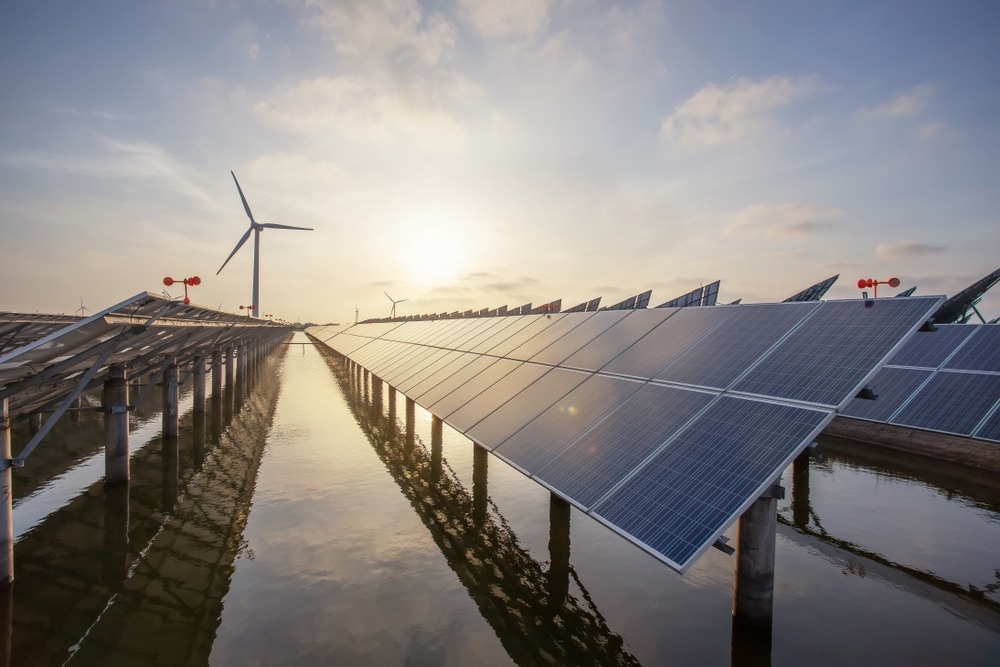Organic solar cells are a promising new technology with the potential to be more attractive for urban or façade applications than the common silicon solar panel because they can be lightweight, flexible, and display a range of colors.

Image Credit: crystal51/Shutterstock.com
However, as scientists attempt to comprehend the fundamental mechanisms that underlie how organic solar cells function, further improvements in device performance have been sluggish.
A new method of expressing energy loss in organic solar cells has now been developed by engineers at Princeton University and King Abdullah University of Science and Technology.
This description has been expanded to include suggestions for designing the best devices and could change the way organic solar cells are typically built. On November 18th, 2022, Joule published their work.
There was a way that energy loss in organic solar cells was traditionally described and defined. And it turns out that that description was not wholly correct.
Barry Rand, Study Co-Author, Associate Professor, Electrical and Computer Engineering, Princeton University
Rand argued that the conventional way of describing energy loss did not consider the existence of disorder in an organic solar cell. Dynamic disorder is one type of disorder that results from the erratically moving molecules at the microscopic level, which practically guarantees energy loss at most temperatures.
The other type, structural or static disorder, results from the internal arrangements of the components that make up an organic solar cell and the intrinsic structures of those components.
No matter the materials used, previous research on organic solar cells produced values of around 0.6 electron volts without taking into account disorder in energy loss calculations.
However, when Rand and his team took disorder into account when calculating energy loss and testing various devices, they discovered that the degree of disorder had a significant impact on how much energy an organic solar cell lost overall.
Rand added, “As the disorder of a solar cell increases, we see our nonradiative energy loss component—the component that we have control over—grows rapidly. The nonradiative energy loss grows with the square of the disorder component.”
The researchers were able to suggest materials that minimize disorder and consequently result in more efficient devices after demonstrating that increasing disorder causes energy loss to sharply increase in devices. In an organic solar cell, scientists have some control over the degree of structural disorder because they can select the materials they use and how to arrange them.
When designing an organic solar cell, scientists can concentrate on producing a homogeneous mixture of materials, in which a film’s constituent parts are all either crystalline or amorphous, or a heterogeneous mixture, in which a film's constituent parts are both crystalline and amorphous.
Through their research, Rand’s team proved that homogeneous mixtures are the best choice for creating organic solar cells. Rand advised against combining highly crystalline and highly amorphous materials in one device to create organic solar cells that perform better.
“If you have anything in between, some heterogeneity in which parts of a film are slightly crystalline and some parts are amorphous, that is when you lose the most energy,” Rand stated.
This result deviates from conventional wisdom, which held that some degree of heterogeneity in solar cell mixtures was advantageous for overall performance. But Rand said that his team’s discovery that heterogeneous device mixtures had high levels of disorder and lost a significant amount of energy could give researchers a new direction as they work to develop more effective organic solar cells.
Rand further added, “Heterogeneity has often been the focal point of devices. Some level of crystallinity was thought to be beneficial. But it turns out that that is not what we saw.”
He observed that many of the best organic solar cells on the market today are made of highly amorphous films and suggested that, given the limitations of current technology, completely amorphous mixtures are more practical than those that are crystalline.
Although the main goal of his team’s research was to comprehend the operating principle of organic solar cells, Rand is optimistic that others will be able to use their findings to create more effective gadgets and eventually set new performance standards for this promising solar technology.
Rand concluded, “This discovery is another aspect of organic solar cells that we can add to what we already know, which will help us improve their efficiency going forward.”
Along with Rand, other authors include Jules Bertrandie, Anirudh Sharma, Wejdan Alsufyani, Julien F. Gorenflot, Frédéric Laquai, and Derya Baran of King Abdullah University of Science and Technology. Saeed-Uz-Zaman Khan, a former graduate student in electrical and computer engineering who is now at ASML, and Manting Gui of Princeton University are also contributors.
The US Department of Energy’s Office of Basic Energy Sciences and King Abdullah University of Science and Technology’s Office of Sponsored Research supported the research.
Journal Reference:
Khan, S.-U.-Z., et al. (2022) Quantifying the effect of energetic disorder on organic solar cell energy loss. Joule. doi:10.1016/j.joule.2022.10.012